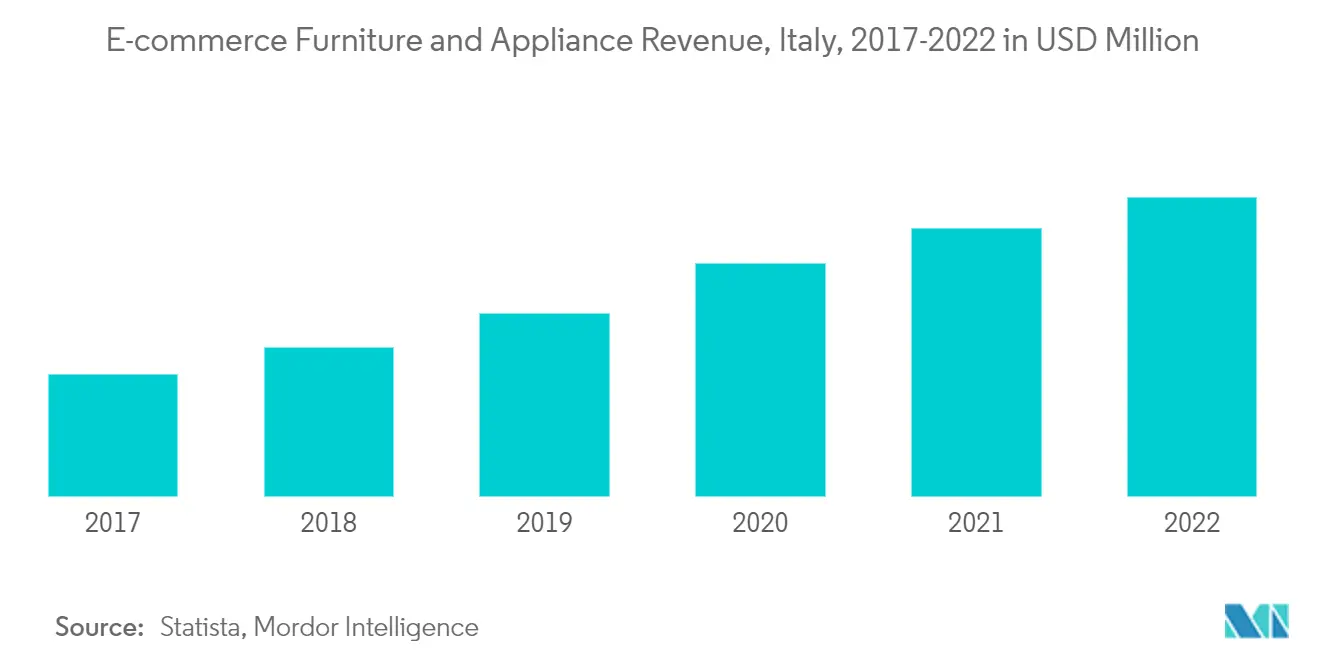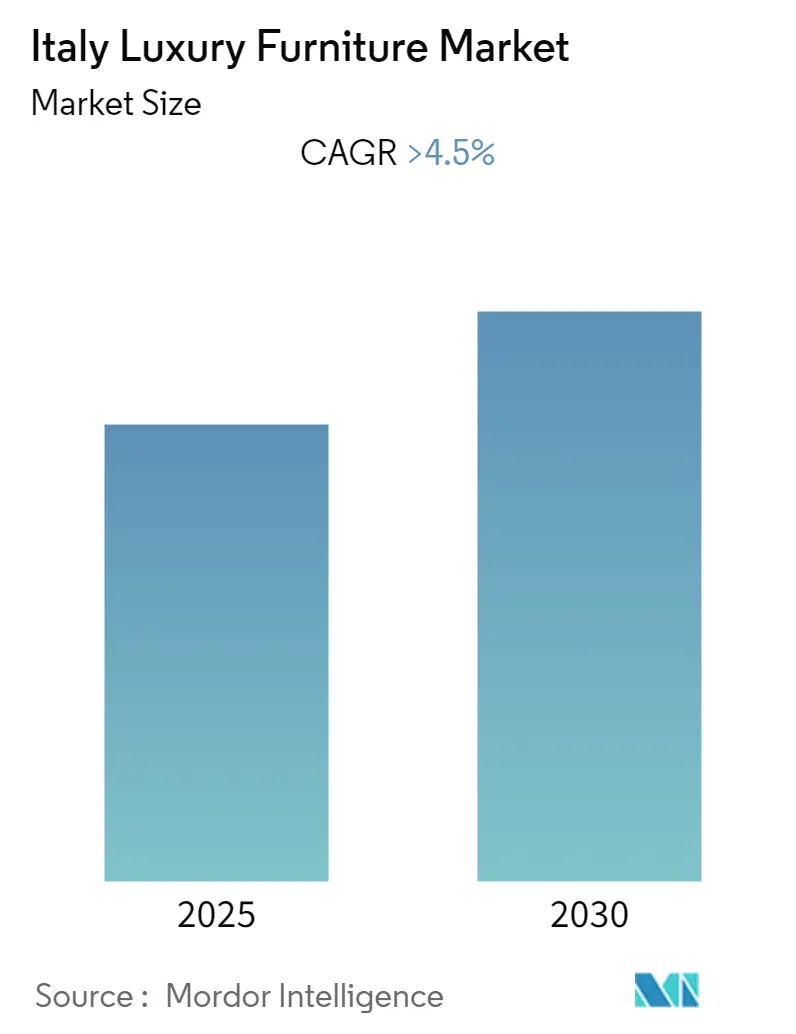
| Study Period | 2020 - 2030 |
| Base Year For Estimation | 2024 |
| Forecast Data Period | 2025 - 2030 |
| Historical Data Period | 2020 - 2023 |
| CAGR | 4.50 % |
| Market Concentration | Low |
Major Players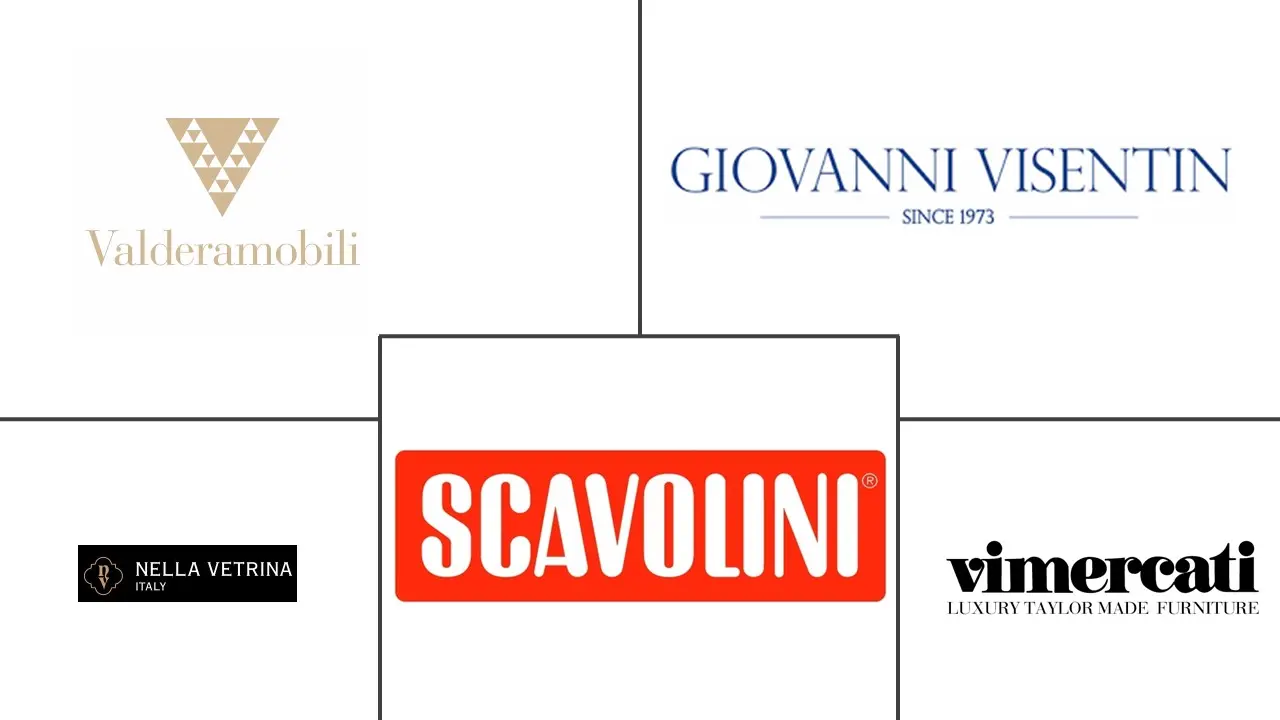
*Disclaimer: Major Players sorted in no particular order |
Italy Luxury Furniture Market Analysis
The Italy Luxury Furniture Market is expected to register a CAGR of greater than 4.5% during the forecast period.
COVID-19 has shaken the Italian economy the most in the world and changed the market scenario entirely. It has severely impacted the Italian luxury furniture market. Accordingly, this segment witnessed one of the greatest hits in 2020. Nearly 40-50% of luxury furniture production happens in Italy-and all the Italian factories, including small, family-based façonniers, have temporarily shut down, which resulted in a sharp decline in sales in the market. Pandemic COVID-19 led to the postponement of Salone del Mobile, the largest furniture show to be held earlier in the month of April, but has now been postponed to a later date in 2020.
Luxury furniture is manufactured by skilled and creative craftsmen using superior quality materials such as metal, wood, glass, plastic, and leather. These luxury furnishings are designed with zero margin error, thereby prolonging their durability. They are used to enhance the ambiance of offices, hotels, homes, restaurants, kitchens, and hospitals. Recent developments in manufacturing technology and an upsurge in demand for customizable furniture are the key factors that drive the growth of the Italian luxury furniture market. Moreover, the high disposable income and the inclination of consumers toward luxury furniture fuel the market growth. The growing popularity of luxury indoor furniture such as bedrooms, bathrooms, kitchens, and other types of furniture is likely to augment the sales of luxury furniture in the domestic segment.
The luxury furniture industry has become one of the most vibrant and fast-growing industries in Italy owing to factors such as the rising population and increased construction activity. The growing number of real estate developments and the increasing demand for residential properties, along with governmental initiatives to develop socio-economic infrastructure, are some of the major factors fueling the demand for luxury furniture products in the region. The luxury furniture market in Italy is highly competitive owing to the rising demand for furniture and furnishing products. The market is witnessing an increase in demand for luxury furniture made from premium wood such as mahogany and alder. Additionally, furniture manufacturers are focusing on innovation of luxury furniture designs with the help of other materials such as leather, glass, metal, etc., to attract consumers, which are likely to play a major role in fueling the growth of the luxury furniture market in the upcoming years.
On the contrary, the surge in e-commerce sales due to convenience in shopping and doorstep delivery of products are opportunistic for the market. Moreover, the rise in the need to manufacture eco-friendly luxury furniture is expected to offer lucrative opportunities for market expansion in the forthcoming years. However, high prices of raw materials, such as wood, unavailability of superior quality wood due to rise in deforestation in the European region, and an increase in awareness about the negative impact of deforestation on the environment are expected to hamper the growth of the Italian luxury furniture market.
Italy Luxury Furniture Market Trends
Growing Demand for Luxury Home Furniture Products through E-commerce
Online luxury furniture sales are expected to see upward growth worldwide, and Italy is also witnessing a surge in online sales of luxury furniture products. For instance, Italy is counted as one of the largest markets for furniture purchased online, and these numbers are expected to increase further in coming years. Key benefits of online retailing are increased choice and a higher level of personalization, which stimulates the purchase decisions of customers. The rising digitalization of luxury furniture and interior shopping offers immense potential to retailers, and many players such as IKEA and Amazon are investing heavily to increase their online presence in household e-commerce.
The Residential Segment in Italy is Driving the Market
Growing disposable income, the increasing urbanization, and the increasing focus on aesthetics and urban lifestyles are further leading to higher usage of high-end furniture products. Urbanization is augmenting the growth of the market study with a rise in the urban population, which fuels the demand for premium products like luxury furniture. The installation of luxury furniture can improve a home's appearance and boost its value. Luxury furniture made from wood and metal is gaining popularity among consumers due to its high aesthetic value and durability. The rise in eco-friendly and multifunctional luxury furniture is also supporting market growth in developed economies. Residential remodeling and replacement may continue to account for luxury furniture demand as homeowners replace older furniture with newer products that offer enhanced visuals.
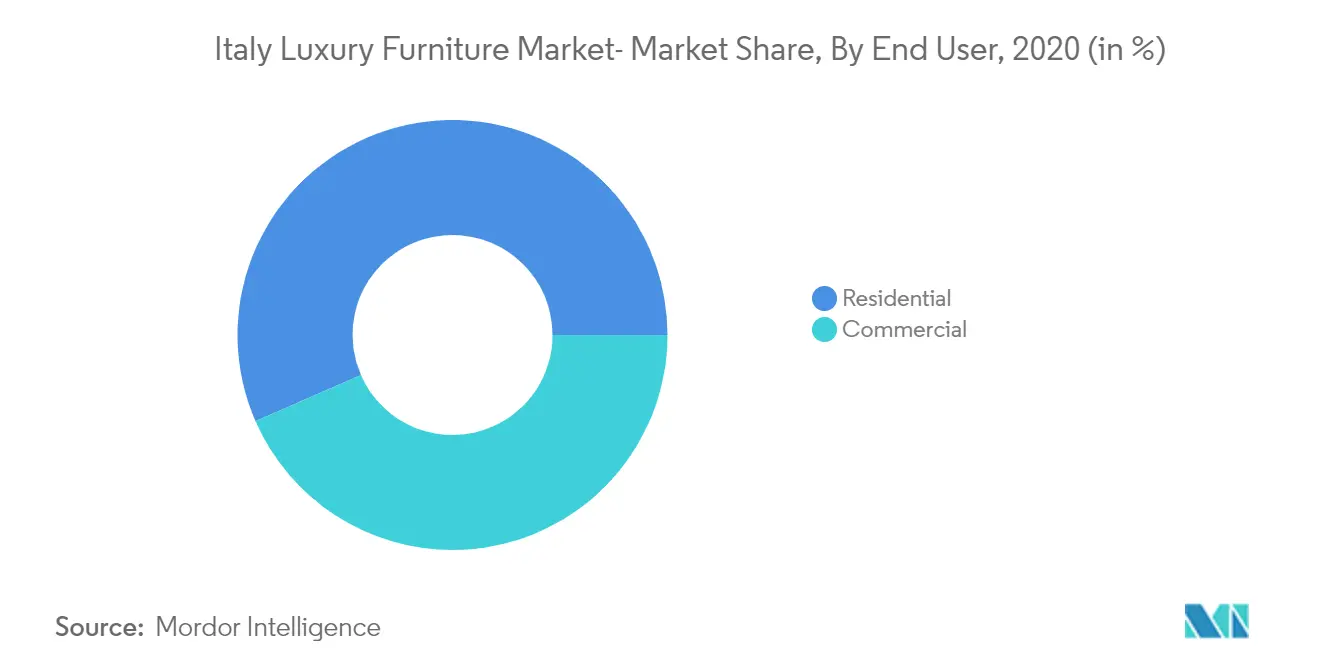
Italy Luxury Furniture Industry Overview
The report covers major international players operating in the Italian luxury furniture market. In terms of market share, few of the major players currently dominate the market. However, with technological advancement and product innovation, mid-size to smaller companies are increasing their market presence by securing new contracts and tapping new markets.
Italy Luxury Furniture Market Leaders
-
Valderamobili
-
Giovanni Visentin
-
Scavolini
-
Nella Vetrina
-
Vimercati
- *Disclaimer: Major Players sorted in no particular order
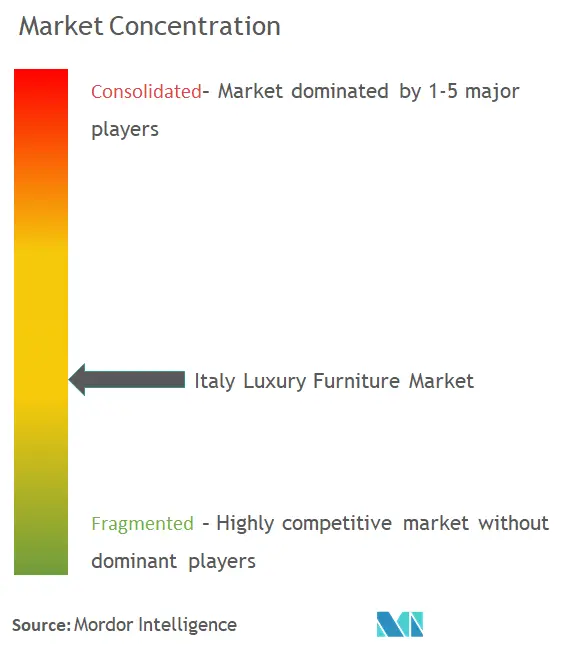
Italy Luxury Furniture Market News
- January 2021- Scavolini launched the first kbb furniture with built-in Alexa. Italian manufacturer Scavolini introduced Dandy Plus furniture for the kitchen, bathroom, and living room, which is claimed to be the first to feature built-in Amazon Alexa.
- November 2020 - Molteni&C launched its first e-commerce platform on the US market.
Italy Luxury Furniture Industry Segmentation
Luxury furniture is something that is conducive to sumptuous living and that includes elements that are elegant, sumptuous, and indulgent. A complete background analysis of the Italian luxury furniture market, which includes an assessment of the luxury furniture market in Italy, emerging trends by segments and regional markets, significant changes in market dynamics, and market overview, is covered in the report. The report also features qualitative and quantitative assessments by analyzing the data gathered from industry analysts and market participants across key points in the industry's value chain. The Italian luxury furniture market is segmented by product type (lighting, tables, chairs and sofas, accessories, bedroom, cabinets, and other products), end user (residential and commercial), and distribution channel (home centers, flagship stores, specialty stores, online, and other distribution channels).
| Product Type | Lighting |
| Tables | |
| Chairs and Sofas | |
| Accessories | |
| Bedroom | |
| Cabinets | |
| Other Products | |
| End User | Residential |
| Commercial | |
| Distribution Channel | Home Centers |
| Flagship Stores | |
| Specialty Stores | |
| Online | |
| Other Distribution Channels |
Italy Luxury Furniture Market Research FAQs
What is the current Italy Luxury Furniture Market size?
The Italy Luxury Furniture Market is projected to register a CAGR of greater than 4.5% during the forecast period (2025-2030)
Who are the key players in Italy Luxury Furniture Market?
Valderamobili, Giovanni Visentin, Scavolini, Nella Vetrina and Vimercati are the major companies operating in the Italy Luxury Furniture Market.
What years does this Italy Luxury Furniture Market cover?
The report covers the Italy Luxury Furniture Market historical market size for years: 2020, 2021, 2022, 2023 and 2024. The report also forecasts the Italy Luxury Furniture Market size for years: 2025, 2026, 2027, 2028, 2029 and 2030.
Our Best Selling Reports
Italy Luxury Furniture Industry Report
Statistics for the 2025 Italy Luxury Furniture market share, size and revenue growth rate, created by Mordor Intelligence™ Industry Reports. Italy Luxury Furniture analysis includes a market forecast outlook for 2025 to 2030 and historical overview. Get a sample of this industry analysis as a free report PDF download.



